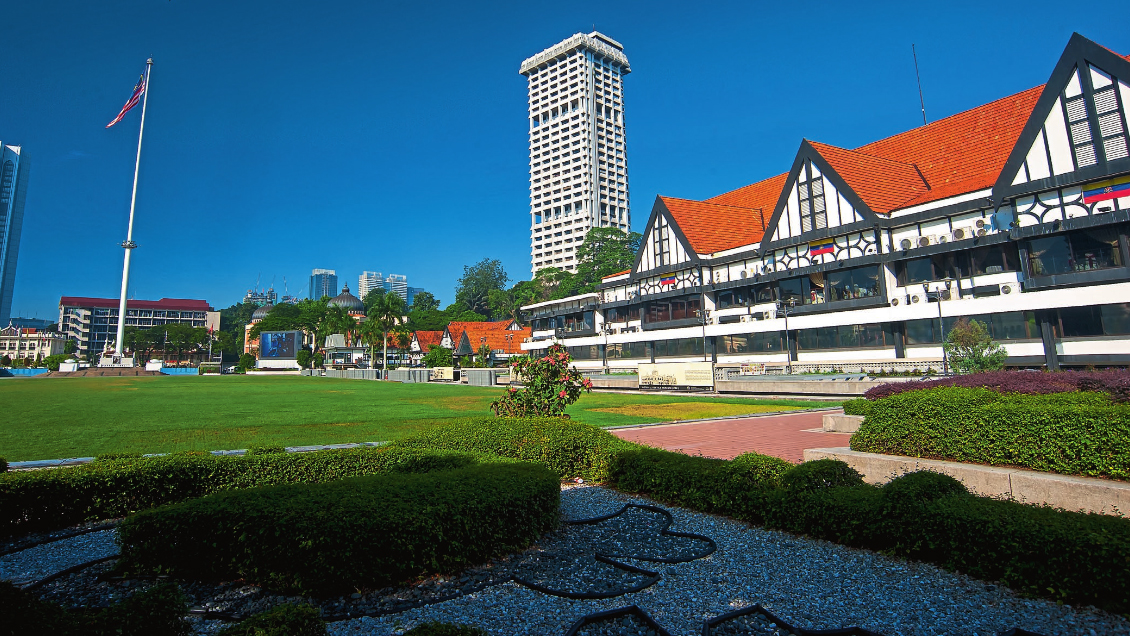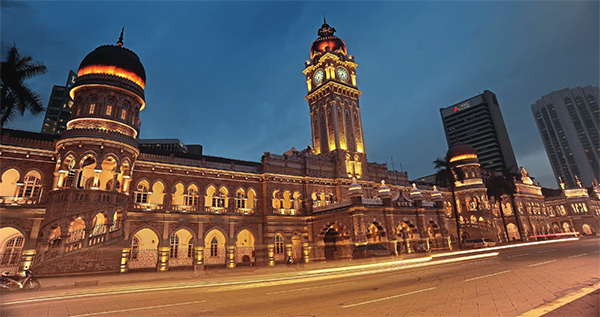
Malaysia’s recorded history dates back to the first century BCE. Located strategically at the crossroads between the East and West, Peninsular Malaysia has attracted early travellers from different parts of the world. Evidence of ancient civilisations (such as tombstones) has been found in the Bujang Valley and the Merbok Valley in the state of Kedah, as well as Hindu Buddhist influences from India and China.
Islam came during the Melaka Sultanate in the 1400s with traders from the Middle East and India. It spread across the nation when the Sultan of Melaka embraced the religion and personally helped spread it across the nation. The reign of the Melaka Sultanate also saw the establishment of trade ties with the Kingdom of China.
Melaka’s spice trade led to its attack by the Portuguese in 1511, resulting in the fall of the Sultanate. Together with their conquest, the Portuguese brought in Catholic Christianity to the locals. In 1641, the Dutch took over control of Melaka. The British came next, at the end of the 18th century in the wake of the Industrial Revolution in Europe.
They formed crown colony states of the Malay Peninsula called the Straits Settlements and subtly intervened in the administration of these previously independent states.
In East Malaysia, Sabah became a British protectorate under the Chartered Company British North Borneo, while the Brooke family ruled Sarawak as the White Rajahs (meaning the “White Kings”) for 100 years. In 1941, the Japanese invaded the country and ruled for about three years before their surrender to the Allied Forces after the bombing of Nagasaki and Hiroshima. The end of World War II saw the beginning of the birth of nationalism in the country. On August 31, 1957, Tunku Abdul Rahman (who became the nation’s first Prime Minister) read the Proclamation of Independence and declared the Malay States of Malaya “with God’s blessing, shall forever be a sovereign democratic and independent state…” Freedom had been granted peacefully. In 1963, Malaya, Singapore, Sabah, and Sarawak joined together to form Malaysia (though Singapore was expelled in 1965).
Since independence, Malaysia has had five prime ministers, namely Tunku Abdul Rahman (Known as the “Father of Independence”), Tun Razak (“Father of Development”), Tun Hussein Onn (“Father of Unity”), Tun Abdullah Ahmad Badawi (Prime Minister from 2003 to 2009), Dato’ Sri Najib Tun Razak (Prime Minister from 2009 to 2018) and returning Prime Minister Tun Dr Mahathir (Prime Minister from 1981 to 2003, 2018 to current). He is also the oldest candidate to assume position of state leader in the world.

KUALA LUMPUR HISTORY
Kuala Lumpur grew from the area now known as Dataran Merdeka (Independence Square), the centre of the British administration for the Federated Malay States. In just over a century, KL has transformed from a few colonial brick buildings to a modern Asian city, combining historical landmarks with some of the world’s most modern buildings.
Most historians agree Kuala Lumpur was founded in 1857, when Raja Abdullah Raja Ja’afar sent a group of 87 Chinese miners upriver from Klang in search of tin deposits. They landed their supplies at the confluence of the Gombak and Klang rivers, the farthest their heavily laden boats could reach. This landing point is said to have given rise to the name “Kuala Lumpur” (“muddy confluence” in Malay). Other historians assert there were already several small settlements, miners, and trading posts in the area before this group arrived. However, their arrival and the beginnings of concentrated mining of the rich tin deposits led to the settlement’s rapid growth.
Much of Kuala Lumpur’s growth is due to the industrial revolutions in North America and the British Empire, which significantly increased the world’s demand for tin. The Chinese, with considerable mining experience in their own country, were the first foreigners to bring Malaysia’s tin deposits into production. By the latter half of the 19th century, there were thousands of Chinese tin miners living and working in Malaya.
Eleven years after Raja Abdullah’s initial expedition, Yap Ah Loy was declared the third “Kapitan China”. Physically strong, a skilled fighter, and willing to get personally involved, Yap Ah Loy is regarded by many as the founder of Kuala Lumpur, and the settlement expanded considerably under his leadership. He assumed the position during a period of intense conflict among the Malay rulers. The civil war eventually forced Yap Ah Loy to leave Kuala Lumpur. When he returned in 1873, much of the town was in ruin. At the request of the merchants of the Straits Settlements, the British intervened to end the civil war, and in 1874 they brokered the Pangkor Engagement that empowered a new British-supported ruler for Selangor.
The Pangkor Engagement introduced the concept of British Residents, which had a profound effect on Kuala Lumpur. As consultants to the various Sultans around Malaysia, the Residents (British civil servants) advised on all matters except those touching on Malay religion and customs. In 1880, the British Resident for Selangor, Bloomfield Douglas, relocated his office from Klang to Kuala Lumpur.
Sir Frank Swettenham, one of Britain’s most famous colonial officers, was Selangor’s British Resident from 1882 to 1889. Under his direction, Kuala Lumpur’s architecture began to take its present form. In 1889, Swettenham became the British Resident for Perak. Seven years later, he persuaded four of the Sultans to unite under the Federated Malay States (FMS).
Swettenham became Resident General and chose Kuala Lumpur as the capital of the FMS. During World War II, Kuala Lumpur was briefly occupied by the Japanese, who overran Malaya in 1942. Although the city sustained some damage during the war, it was not devastated.
Malaya gained its independence in 1957, with Kuala Lumpur as its capital. Kuala Lumpur was separated from Selangor State in 1974, creating the Federal Territory (Wilayah Persekutuan in Malay) consisting of 240 sq km – essentially Kuala Lumpur city and its immediate surroundings.
"ExpatGo welcomes and encourages comments, input, and divergent opinions. However, we kindly request that you use suitable language in your comments, and refrain from any sort of personal attack, hate speech, or disparaging rhetoric. Comments not in line with this are subject to removal from the site. "


